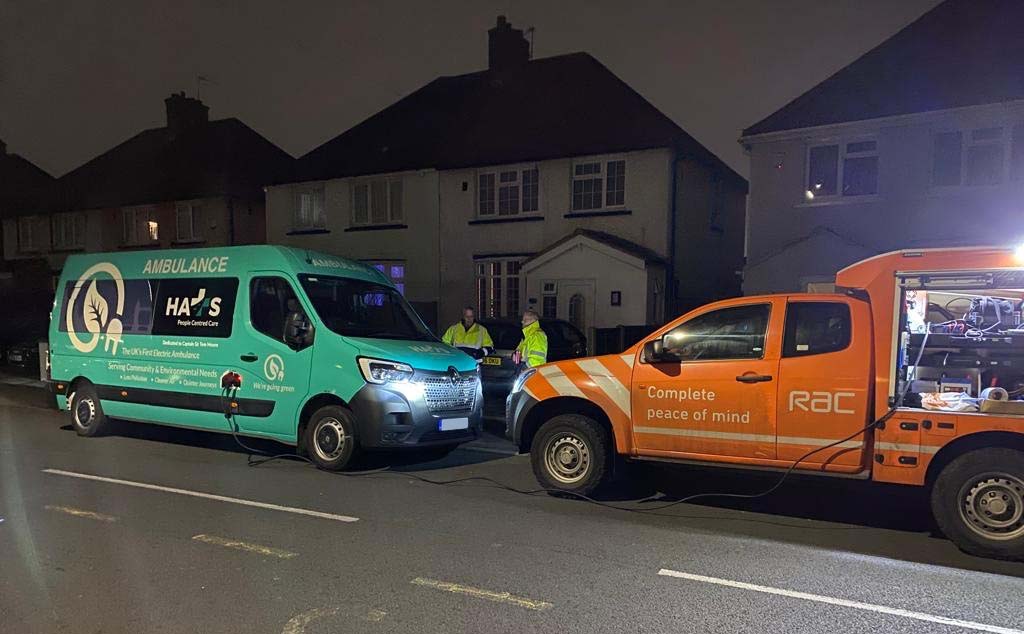
RAC act as first responders to flat electric ambulance…
London’s first electric ambulance was just over a mile away from the hospital when it ran out of charge and was left stranded at the roadside. The RAC were prompt to respond and deployed a patrol vehicle to provide an emergency power boost to the ambulance from the on-board Original ADS Charge Pod system.
Charge Pod was the best possible solution in this scenario because other alternatives could have proved problematic. For example, if a van filled with portable batteries was sent to attend, there would only be a limited amount of power available to provide the ambulance with the amount of power needed to enable the vehicle to reach a charging station. This particular ambulance is a Renault Master Z.E which has a large battery (57kWh) in order to provide the vehicle with as much range as possible. Therefore, if you only have a limited power capacity to provide the roadside charge, then you cannot guarantee that the vehicle will be provided with enough range to enable it to reach a static charging station. In contrast, the Charge Pod system has an engine mounted generator on the patrol vehicle so that it has 100% duty cycle meaning it will not run out before the EV has enough charge to reach a static charging station.
Another possible solution was to get a flatbed recovery truck to transport the ambulance and its crew to a static charging station. However, this method is considerably more damaging from an environmental and an economical perspective. The CO2 emissions of deploying a flatbed recovery truck are up to 30 times higher than when a standard patrol vehicle equipped with Charge Pod is sent to an ‘out-of-charge’ EV job. The cost of deploying a patrol vehicle armed with the Pod is also considerably cheaper for roadside assistance companies than sending a flatbed recovery truck.
Furthermore, the RAC has a renowned reputation for fixing 4 out of 5 breakdowns at the roadside. The foundation of this remarkable statistic is due to the capability of the RAC patrol vehicle. Charge Pod has therefore fit seamlessly into the RAC’s existing business model and has further enhanced the capability of the standard patrol vehicles which are already in service.
Further information:
For more examples of EVs running out of charge before they have been able to reach a static charging station, click here: https://originalads.co.uk/media-page/running-out-of-charge-stories/
Further information about the implementation of Charge Pod in the RAC’s fleet can be found here: https://www.rac.co.uk/drive/news/motoring-news/rac-exclusive-deal-will-see-hundreds-more-mobile-ev-charging-vans-on-the-ro/#:~:text=As%20a%20result%20of%20the,vehicles%20an%20emergency%20roadside%20boost.
To learn more about the Charge Pod system, click here: https://originalads.co.uk/charge-pod/
For more information about EV breakdown cover with the RAC, click here: https://www.rac.co.uk/breakdown-cover/electric-car-breakdown-cover
